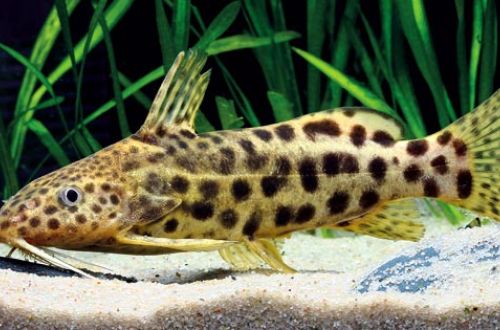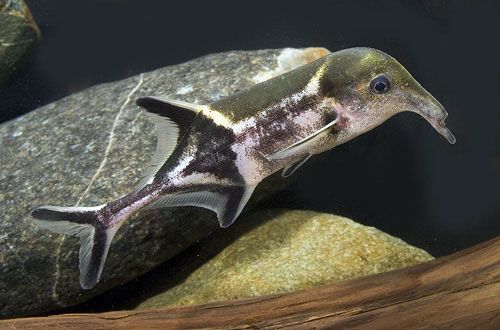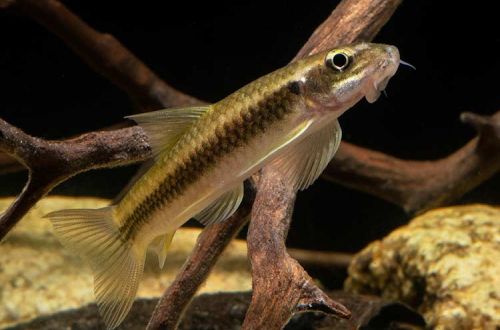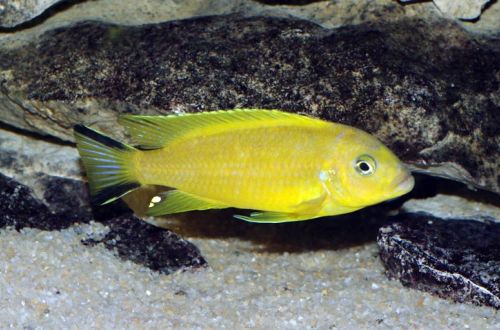
Pseudotropheus Doctors
Pseudotropheus Daktari, scientific name Maylandia sp. Daktari belongs to the Cichlidae family. Previously belonged to the genus Pseudotropheus, which is reflected in the trade name of the species. Relatively easy to keep and breed, if the fish live in suitable conditions and regular maintenance of the aquarium is carried out. It has a quarrelsome character, so it is difficult to find compatible species.

Contents
Habitat
Endemic to the African Lake Malawi – one of the largest on the planet. It is located on the border of the state of the same name Malawi, as well as Tanzania and Mozambique. This species inhabits the southern part of the lake. The natural habitat is characterized by rocky shores interspersed with sandy substrates.
Brief information:
- The volume of the aquarium – from 150 liters.
- Temperature – 25-29°C
- Value pH — 7.6–9.0
- Water hardness – medium to high hardness (10-25 dGH)
- Substrate type – sand or gravel
- Lighting – moderate
- Brackish water – no
- Water movement – weak, moderate
- The size of the fish is 8–10 cm.
- Nutrition – any plant-based
- Temperament – inhospitable
- Keeping in a harem with one male and several females
- Life expectancy about 8 years
Description
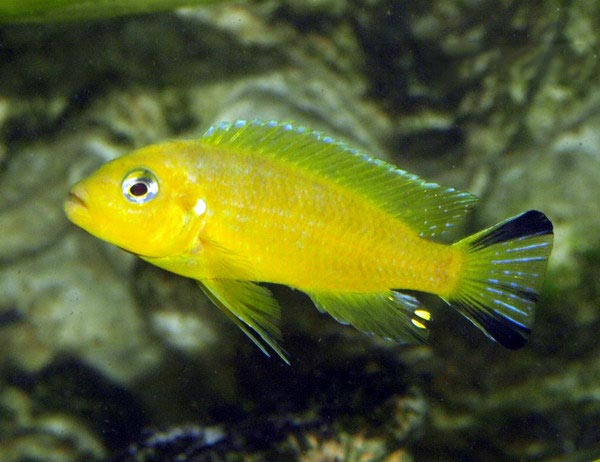
Adults reach a length of 8-10 cm, in an aquarium there may be more. The fish has a “torpedo-shaped” body shape characteristic of Mbuna cichlids. Sexual dimorphism is weakly expressed. Males and females are similar to each other, the latter are somewhat smaller in size. The coloration is yellow, a characteristic feature is black strokes on the upper and lower edges of the tail.
It is worth noting that, depending on the region of origin, blue shades may be present in the color. Therefore, in identifying this type of cichlid, pay attention to the tail fin. His drawing is unchanged.
Food
In the wild, they feed on algae by scraping them from the surface of rocks. Along with them come across various insect larvae, small crustaceans and other zooplankton. In a home aquarium, plant-based foods should be the basis of the diet. An excellent choice would be food designed specifically for Malawian cichlids.
Maintenance and care, arrangement of the aquarium
The size of the aquarium for a small group of fish starts from 150-200 liters. The design is simple, since the natural habitat of Pseudotropheus Daktari is not very diverse. The minimum set of design elements is as follows: sand or gravel substrate and heaps of rock. Of the latter, gorges, caves, grottoes for shelter are formed. Live plants are not required.
One of the most important ingredients for successful management is maintaining stable water conditions with suitable pH and dGH values. This will require a productive filtration system, as well as a weekly replacement of part of the water (10–20% of the volume) with fresh water, depending on the number of fish. Equally important is the regular cleaning of the aquarium from organic waste.
Behavior and Compatibility
Pseudotropheus Daktari belongs to the Mbuna group of cichlids. Males are distinguished by rather aggressive behavior towards their relatives (especially towards other males) and fish that have a similar color. It is recommended to keep in a harem-type group, where there are several females per male.
In larger tanks, they can be combined with other species from Lake Malawi, provided there is plenty of cover and bottom space for the alpha males to establish territory.
Breeding / breeding
In favorable conditions, spawning will become regular. With the onset of the mating season, females lay their eggs in the territory of the alpha male, and after fertilization they immediately take them into their mouths. In the future, the entire incubation period will take place in the mouth of the female. This is an evolutionarily established clutch protection mechanism that is characteristic of most Malawian cichlids.
The fry will appear in 2-3 weeks from the moment of spawning. For some time, the female guards her brood, swimming next to them. And in case of danger, the fry can again hide in the female’s mouth.
It should be noted that the breeding efficiency is higher in separate species aquariums, where there is no danger to juveniles from other fish.
Fish diseases
The main cause of most diseases in Malawian cichlids is inadequate housing conditions and poor quality food, which often leads to such a disease as Malawi bloat. If the first symptoms are detected, you should check the water parameters and the presence of high concentrations of hazardous substances (ammonia, nitrites, nitrates, etc.), if necessary, bring all indicators back to normal and only then proceed with treatment. Read more about symptoms and treatments in the Aquarium Fish Diseases section.



